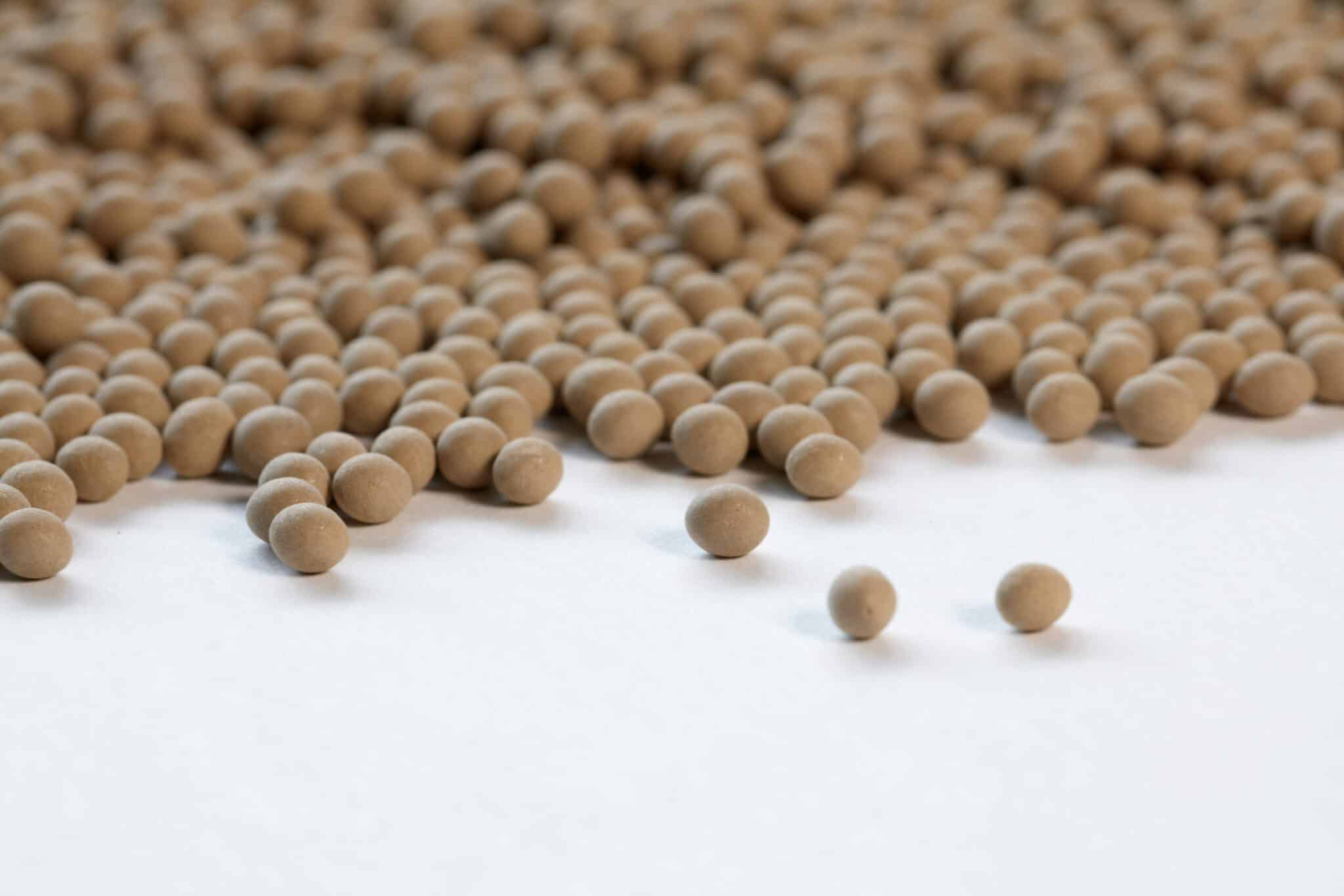The industry can clearly see the huge potential that the latest breeding methods can bring to the seed sector.
“Eat your vegetables.” Who hasn’t grown up hearing their mother recite these very words?
We all know that vegetables are good for you. And with advances in plant breeding innovation, this can accelerate the improvement of seed varieties for the benefit of agriculture and consumers on a global basis.
“In the last decade alone, crop-focused gene editing research projects have grown exponentially,” says Szabolcs Ruthner, regulatory affairs specialist at the International Seed Federation.
“Studies that focused specifically on bringing gene edited plant products into the marketplace have already surpassed 200 peer-reviewed publications,” he says. “That number continues to grow. We see a huge diversity in developers, species, and improved characteristics in 25 different countries. This gives us plenty of reasons to be thrilled about the future of this method.”
Uri Krieger, head of vegetables and flowers R&D at Syngenta Seeds, says in the past decade there have been some major trends in the way Syngenta develops its products.
“For generations, the plant breeding space was associated with plant scientists, phytopathologists and geneticists who used the tools in their areas along with their expertise to address their breeding objectives,” he says. “As data and data science tools became more prevalent, the field of plant breeding began to explore new ways to scale the selection process with greater levels of precision. It created space for expertise from different disciplines to work together towards solving the big problems.”
Genetic Studies and Genome Editing
Classically, genetic studies relied on the discovery and analysis of spontaneous mutations or random mutagenesis radiation or using different chemical agents.
“It is not really known, but the first targeted genomic changes were produced in yeast as early as the 1970s and 1980s. It was already very precise, but at the same time rather inefficient,” says Ruthner. “The secret to high-efficiency genome editing is the ability to make a targeted DNA double-strand break (DSB) in the chromosomal sequence of interest. Realization that such a break would stimulate gene targeting and local mutagenesis did not arise de novo but came from research on DNA damage and repair.”
In early 2000, genome editing systems like Talen and Zinc Finger nucleases started to be applied, but mostly remained a research tool. Few products were developed from these technologies.
“What really revolutionized genome editing was the discovery of the CRISPR complex,” says Ruthner. “CRISPR/Cas9 edits genes by precisely cutting DNA and then letting natural DNA repair processes to take over. This is a rapidly evolving field of technology. We now have many variations of CAS proteins, but also new technologies such as prime editing or base editing are capable of small genetic base pair changes in the genome without the necessity of inducing a double stranded break.”
“Last year’s Nobel Prize in chemistry for CRISPR technology helped to bring more awareness and mainstream recognition for this revolutionary technology,” Krieger adds. “One of the biggest advantages across all crops is that it allows us to develop products faster to respond better to grower and market needs.”
He says genome editing can save considerable time to develop updated disease resistance traits, react faster to new strains and to help growers minimize crop loss.
“Syngenta Seeds owns proprietary HI-Edit technology — or haploid induction editing. HI-Edit combines CRISPR-Cas9 with the reproductive process of haploid induction (HI) that occurs naturally in hybrid crops,” Kreiger says. “It allows breeders to modify crops at various stages in the seeds research and development process, reducing the substantial cost and time associated with trait introgression.”
One of the key benefits of gene editing tools, such as CRISPR, is its ease of implementation. This means that up-front investment costs don’t hinder small entities to develop innovative products.
“This enables many players active in vegetable breeding such as public sector institutions, smaller companies, and start-ups to leverage these tools to conduct research and develop improved crops,” says Ruthner. “There’s no question that gene editing methods are widely accessible, evident by the number and diversity of gene edited crops, including vegetables under development.”
However, the breeding of new varieties is a multi-year long process. Latest breeding methods such as genome editing can speed up this process and make it more efficient.
“Conventional plant breeding involves the crossing of one line with another, often with an objective to move a new trait into an elite background,” says John Lindbo, a senior biotechnology manager at Sakata. “Often times, the trait we are moving is coded by a gene that has a very small difference in DNA sequence from the same gene in the elite background. Gene editing has the potential to edit the sequence so that only the targeted gene is changed.”
While gene editing is not yet being widely used in the vegetable sector, Lindbo adds that there is still a lot of work to discover new promising gene targets to work with and some concerns about whether the typical consumer is ready to accept products created with this technique.
Breeding Techniques
When it comes to plant breeding, Ruthner emphasizes that this requires foresight and innovation because the breeding process can take years of a selection and performance evaluation before a new variety is ready for the market.
“I believe that one of the best ways to gain consumer trust is to speak about the benefits that new products can bring to them,” he says. “This could certainly be an advantage for the vegetable seed sector as their products are directly consumed so any improved characteristics, such as nutrition profile, taste, shelf life, etc. are immediately visible to the consumers.”
Lindbo adds that breeding is a messy process where a lot of unintended and undesirable genes or DNA sequences can get moved into a new plant along with the one or two genes the breeder really wants.
“The breeder’s job,” he says, “is to keep the genes he/she wants and get rid of the undesirable ones. This process takes many years, lots of land, water and other resources to grow large numbers of plants needed in traditional breeding.”
In contrast, gene editing can enable precise changes in DNA, so just the desired gene can be brought into a plant without all the genetic baggage from older breeding methods.
Lindbo says molecular markers are used a lot to facilitate the fixation of important traits and increase the potential of plants we take to the field for evaluation.
“Using these DNA tests lets us make better varieties in a way that uses less resources — like less water or field space. Tissue culture is used to create dihaploid lines. These are finished (genetically stable) lines that can be used immediately in the development of new hybrid varieties. This technology enables the development of parental material in a much shorter time, so the development process has a smaller carbon footprint.”
Peter Visser, the R&D crop lead for leafies, okra, asparagus, celeriac at BASF’s vegetable seeds business, says molecular markers, genomic tools, double haploids and statistical (or genomic) prediction of line and hybrid performance are some examples of breeding techniques that are increasingly being used.
“These technologies are not new, but the increased power and speed of computing gives them new life in aiding plant breeding in vegetable seeds,” he says. “Also worth mentioning is that the cost of each has significantly decreased over the years. Now these technologies are intertwined into the variety development steps.”
Additionally, advancements in computing power such as computer vision and machine learning enables digitalization of phenotyping in field and greenhouse. This can be used to either improve data quality, increase output or to phenotype traits that couldn’t be done before these technologies were available.
“The overall goal of new breeding techniques is to generally speed up the selections process through increased accuracy and bring improved varieties to market faster,” Visser adds.
What’s Next?
As for what the next three to five years holds for plant breeding and gene editing Lindbo says he does not foresee a lot of change, but rather a steady evolution.
“To be successful, I think the first vegetable products to emerge using this technology will have to be providing enhancements that excite the consumer,” he says.
Visser believes the industry is ready to use new technology.
“The speed of implementation depends on the cost of deregulation and, above all, on the impact these have on our business: i.e., agility and speed of plant breeding, cost of R&D and speed to market,” he continues.
If gene editing becomes deregulated and the level of public acceptance increases, Visser says, this technique may slowly become more used to make specific adjustments to existing varieties, but only when natural variation is not readily available to the breeder.
“[However], it is not very likely that gene editing will replace current modern breeding technologies like hybrid breeding, marker assisted breeding, genomic selection, or the use of double haploids.”
Ruthner says the industry can clearly see the huge potential that the latest breeding methods, such as genome editing, can bring to the seed sector.
“At the moment, the biggest limitation is the legislative uncertainty in many areas of the world,” he says. “Therefore, we see only niche products on niche markets and there is no product being commercialized with global relevance.”
Want to Read More? Check Out:
Seed Speaks: Stackable Traits Take the Spotlight
ASTA Flower and Vegetable Conference Hosts Global Leaders
Alternative Protein Growth is Skyrocketing. Are You Ready for it?












